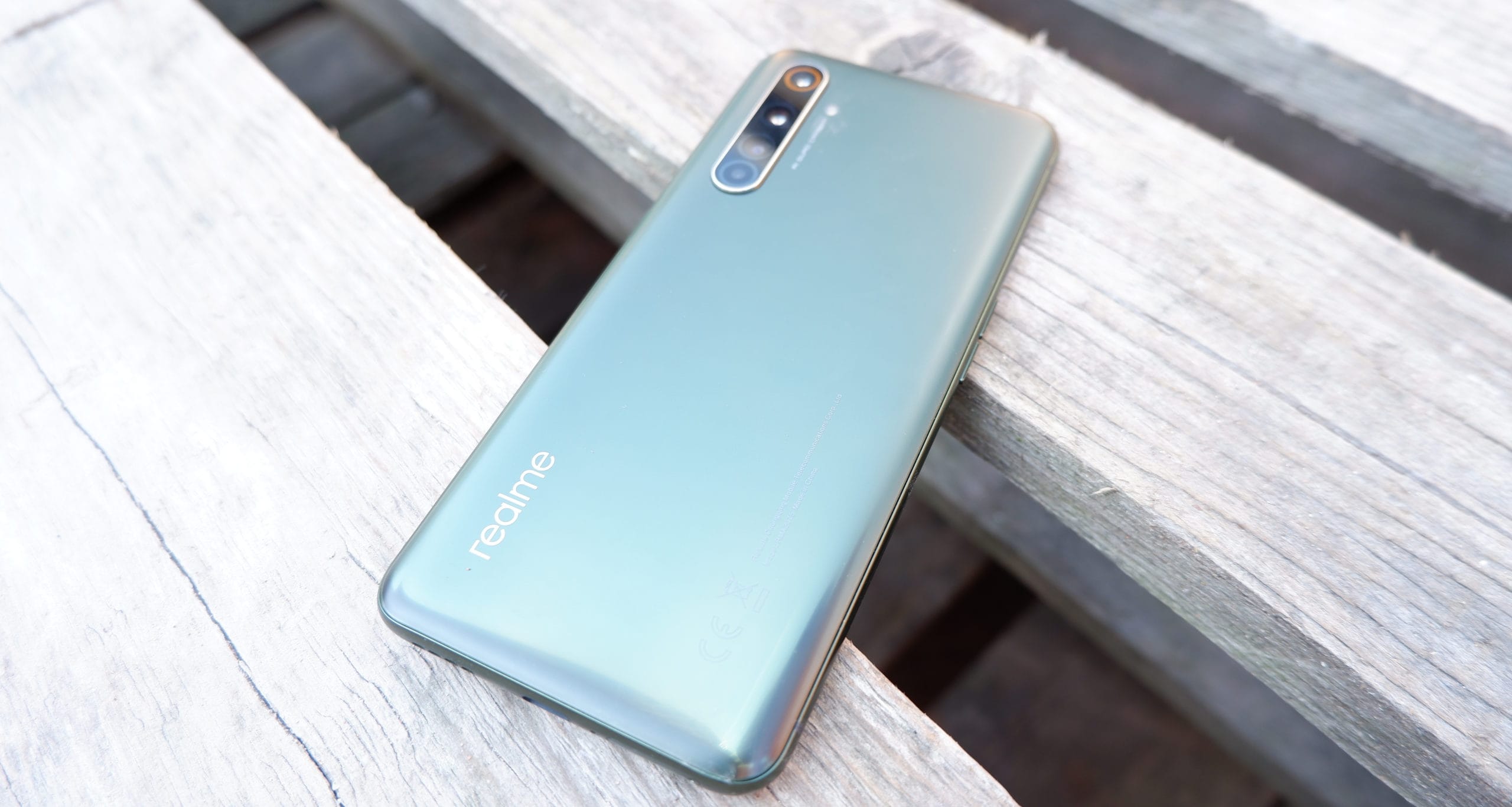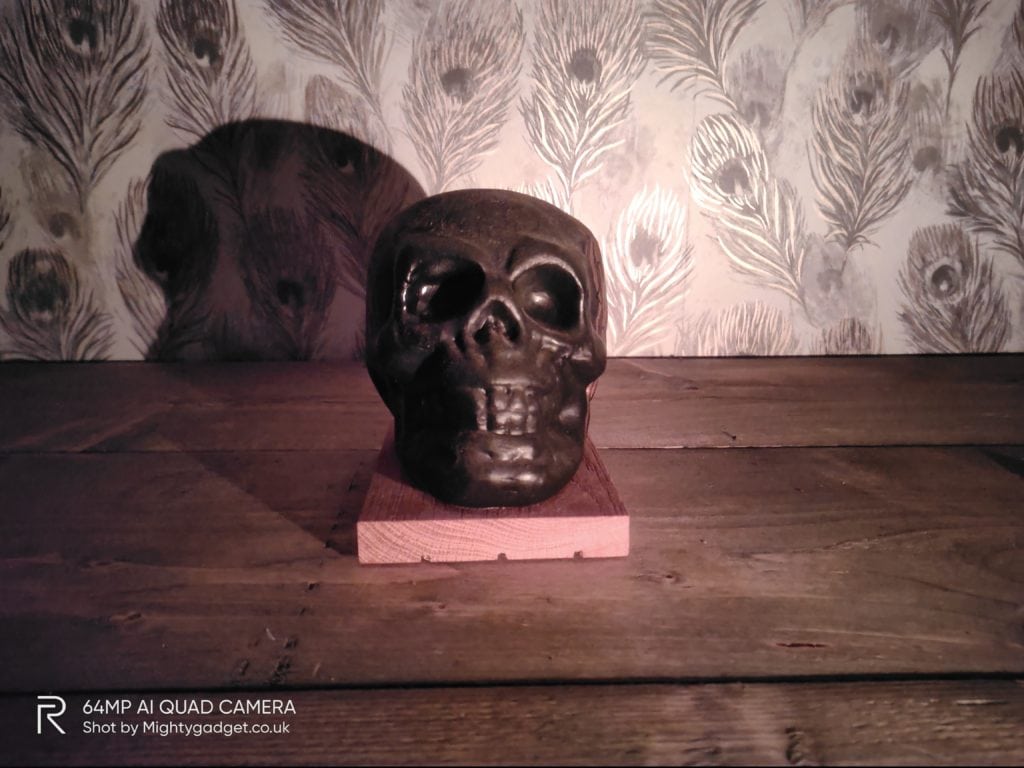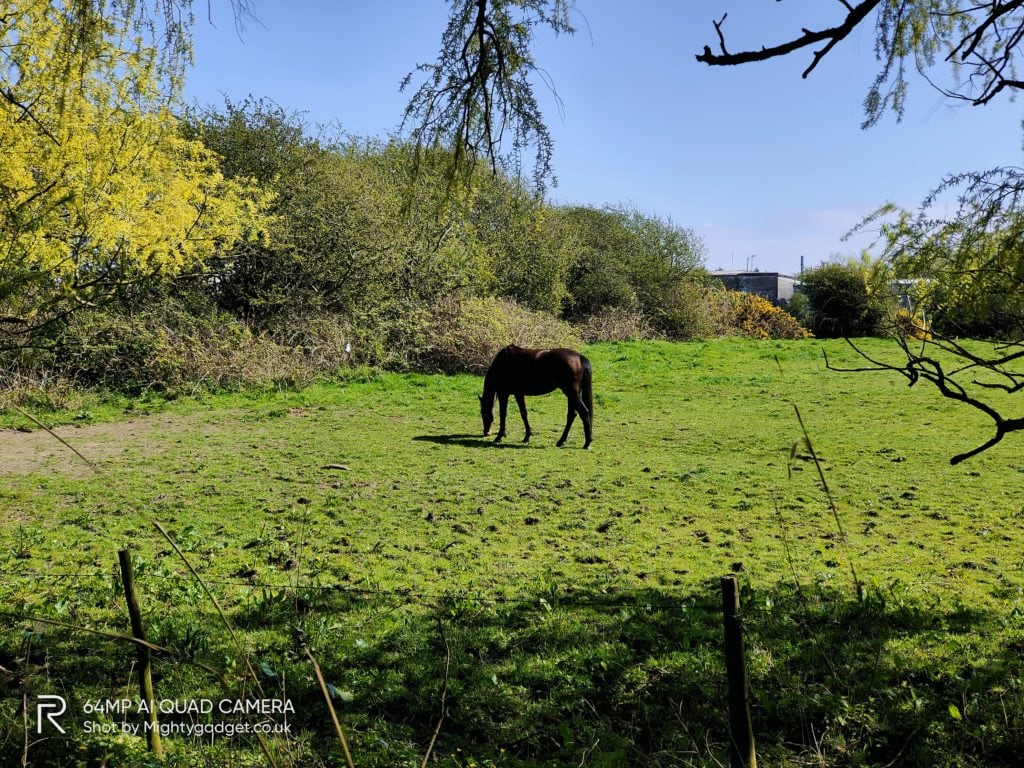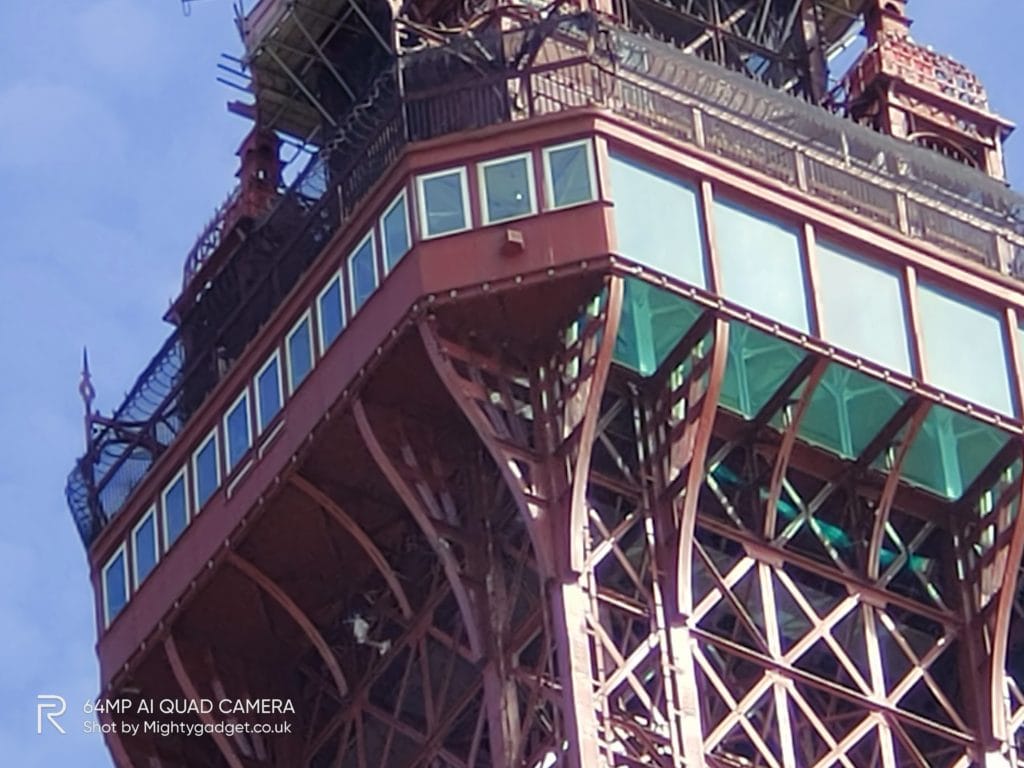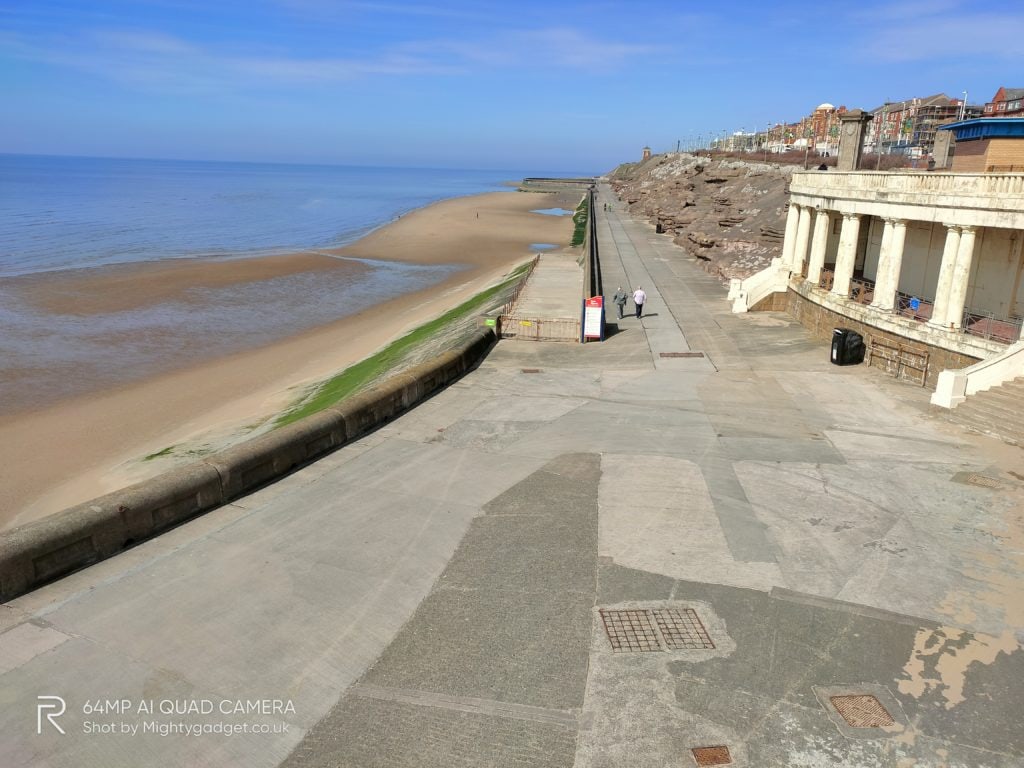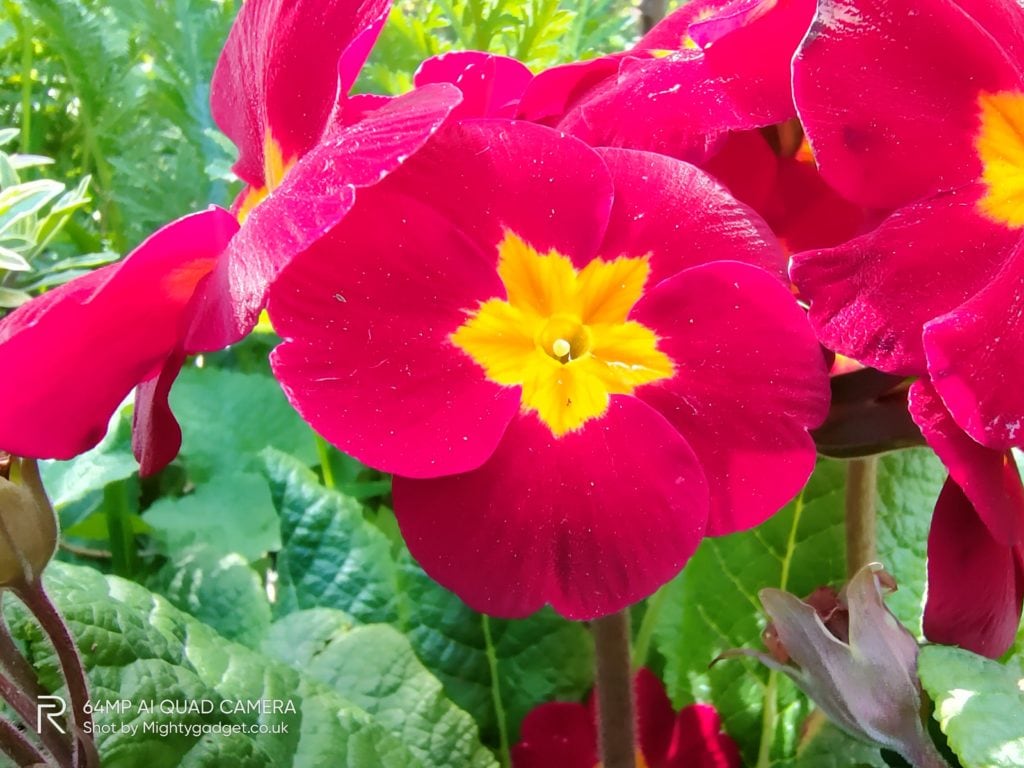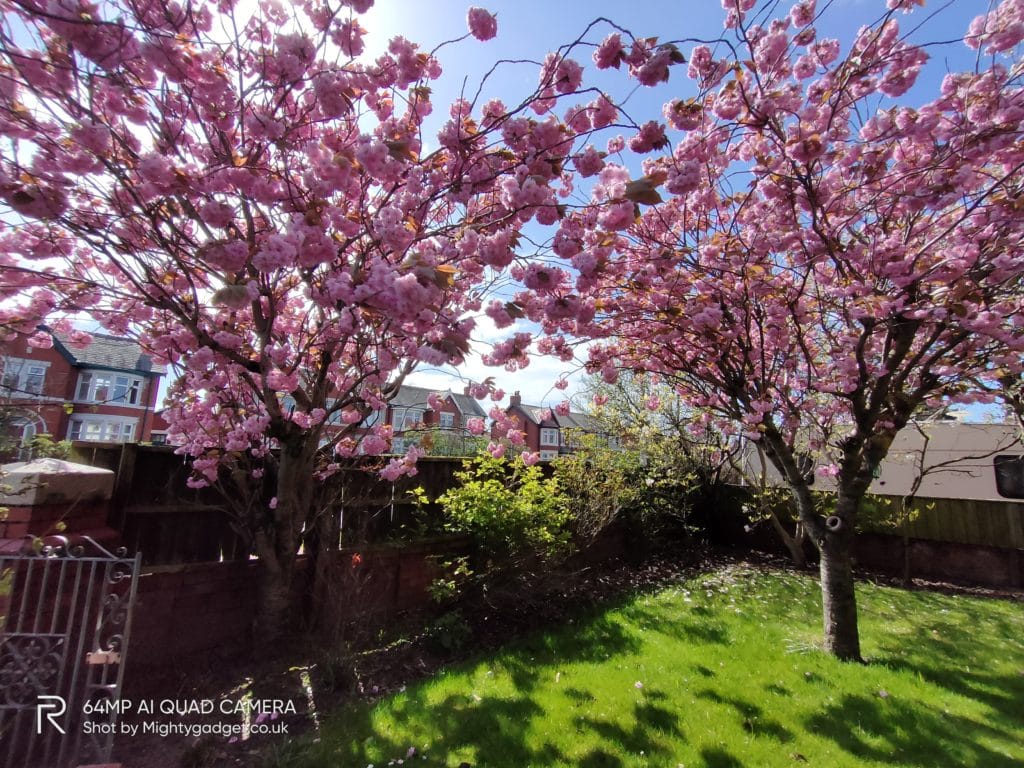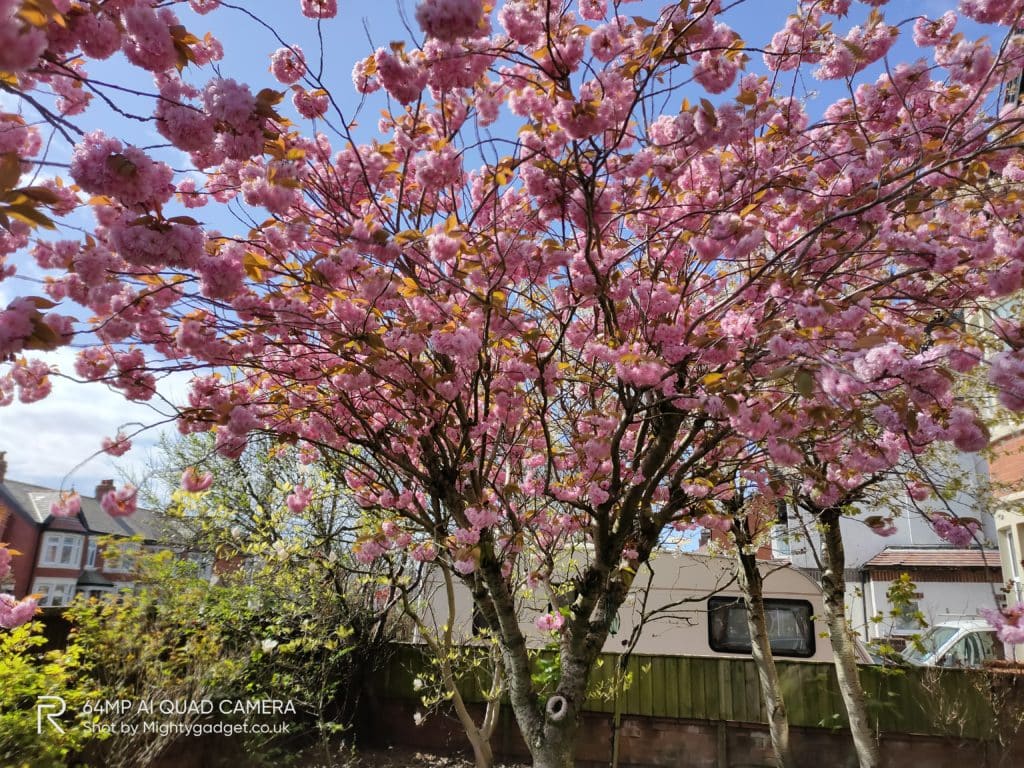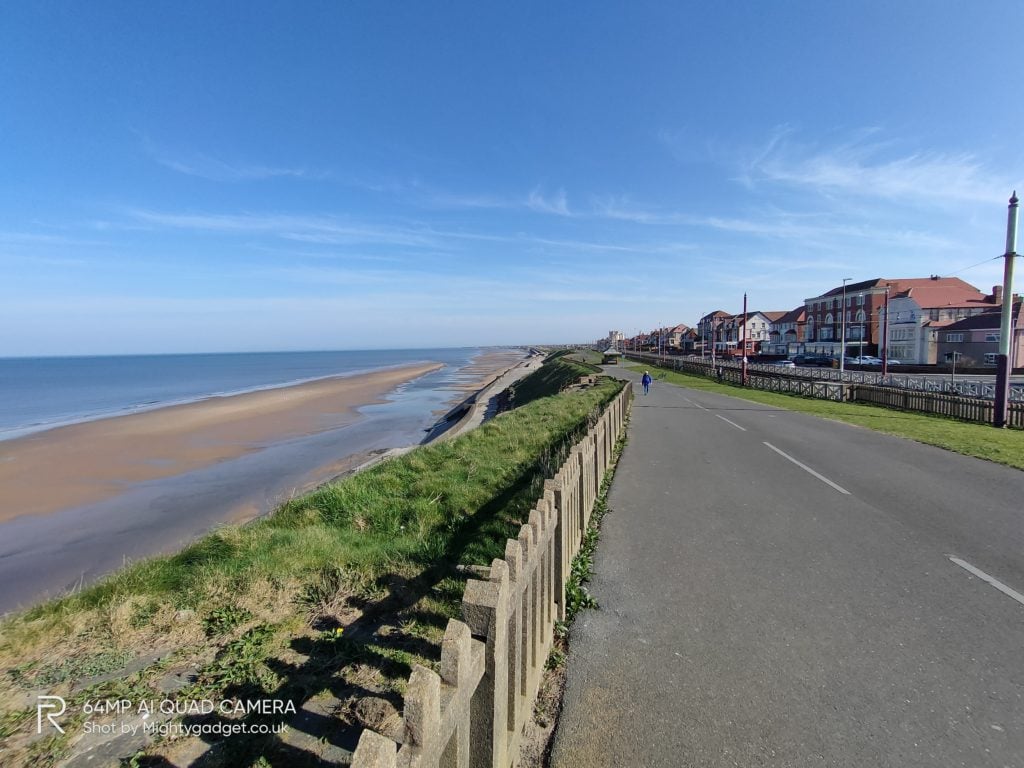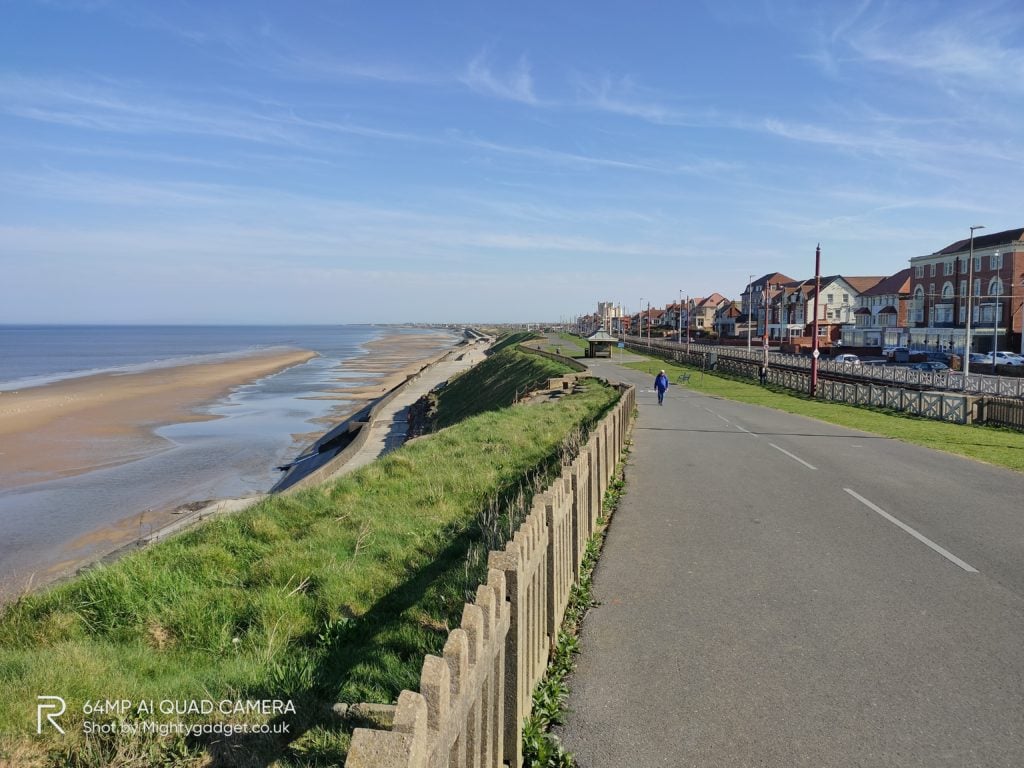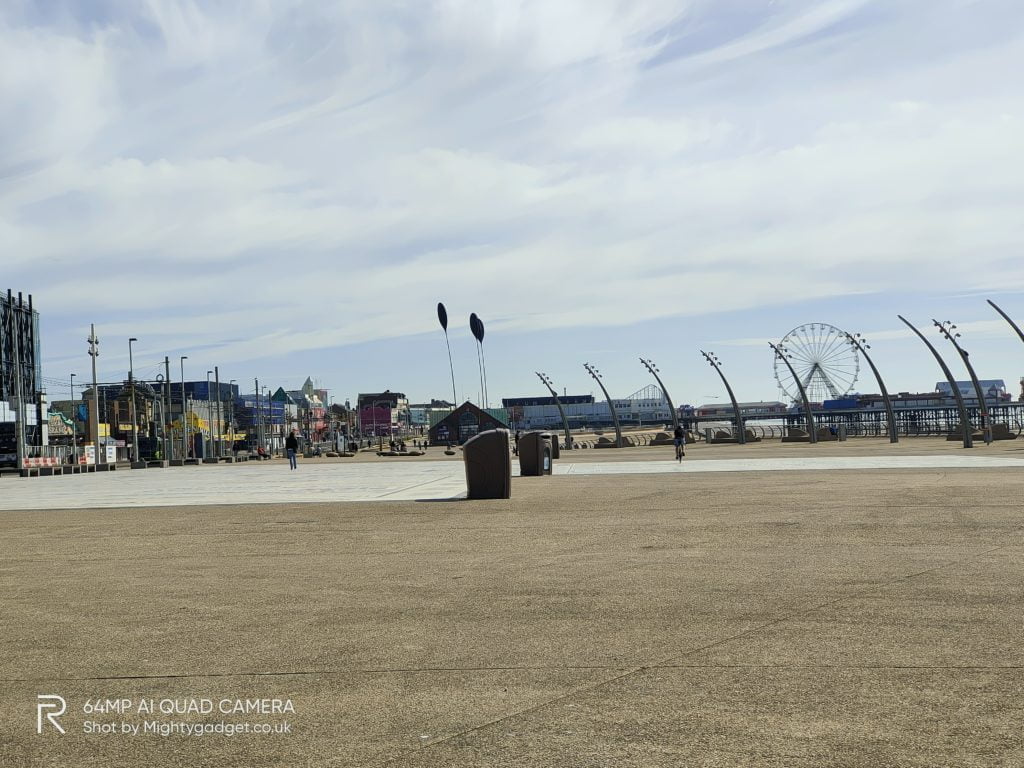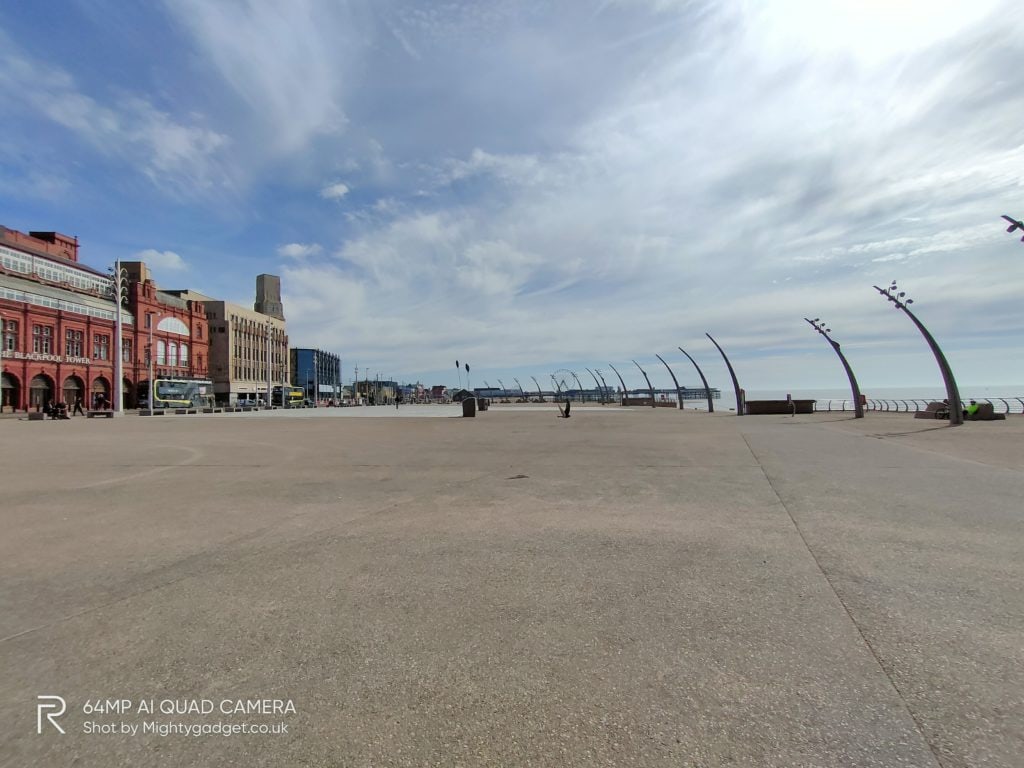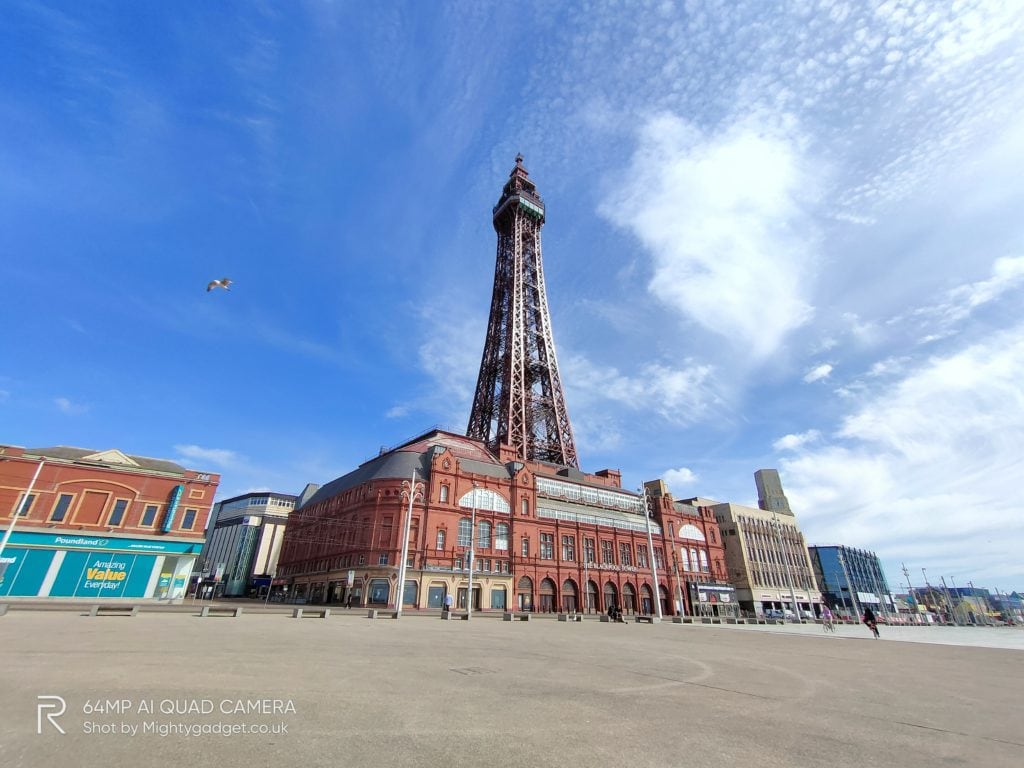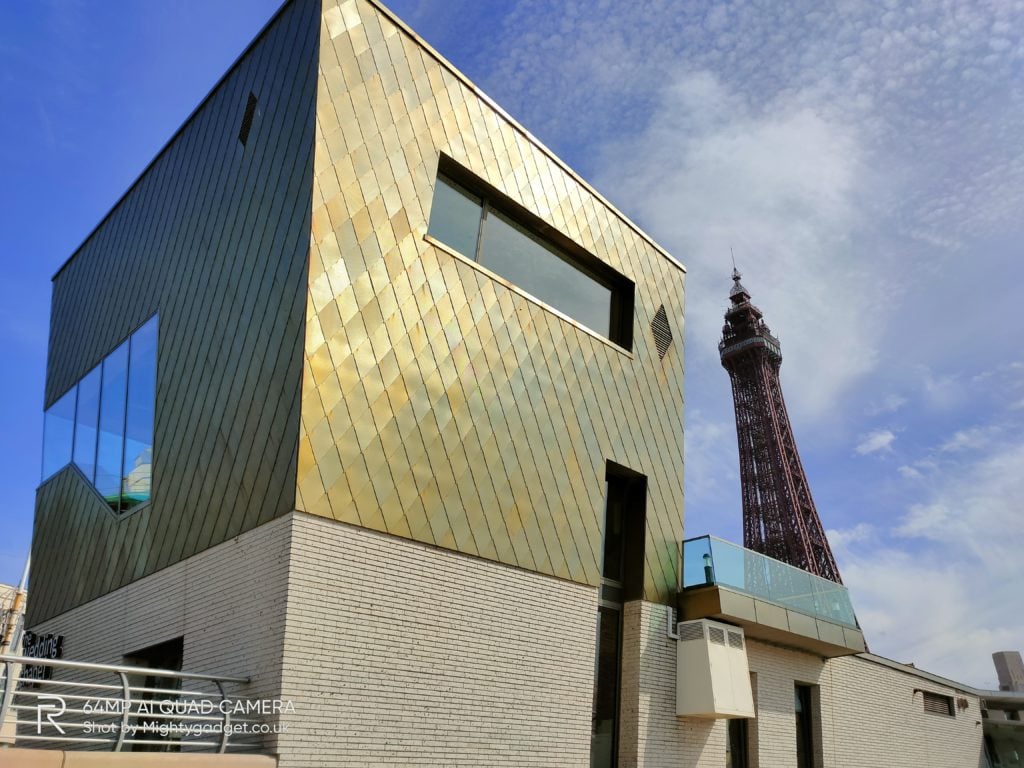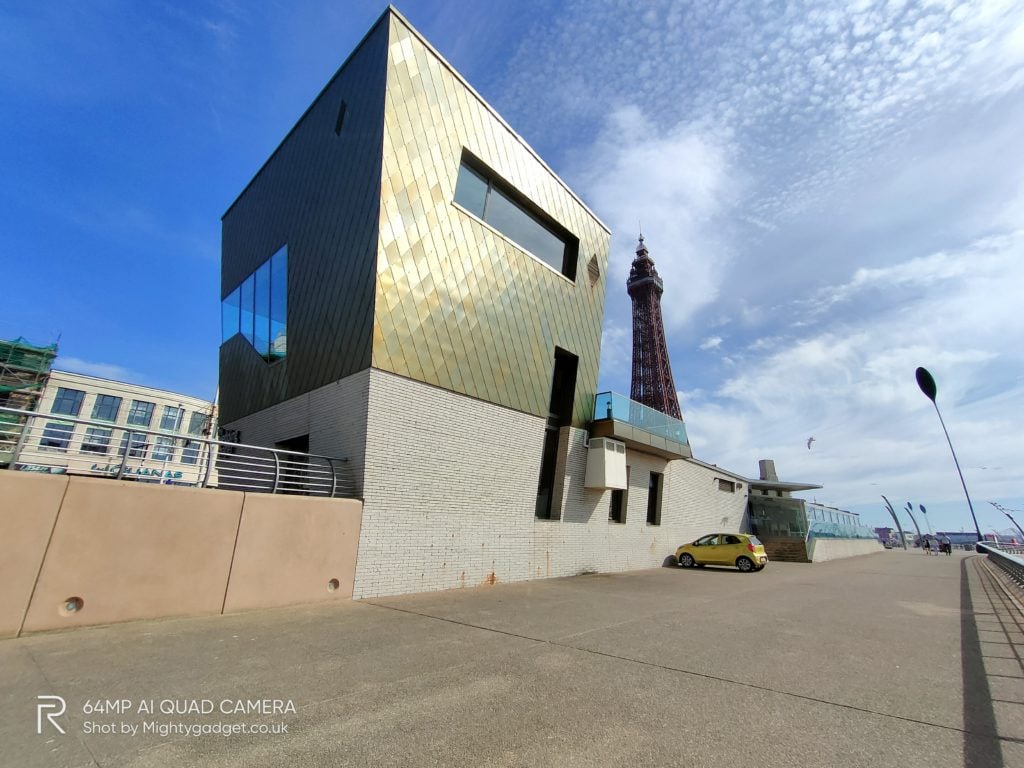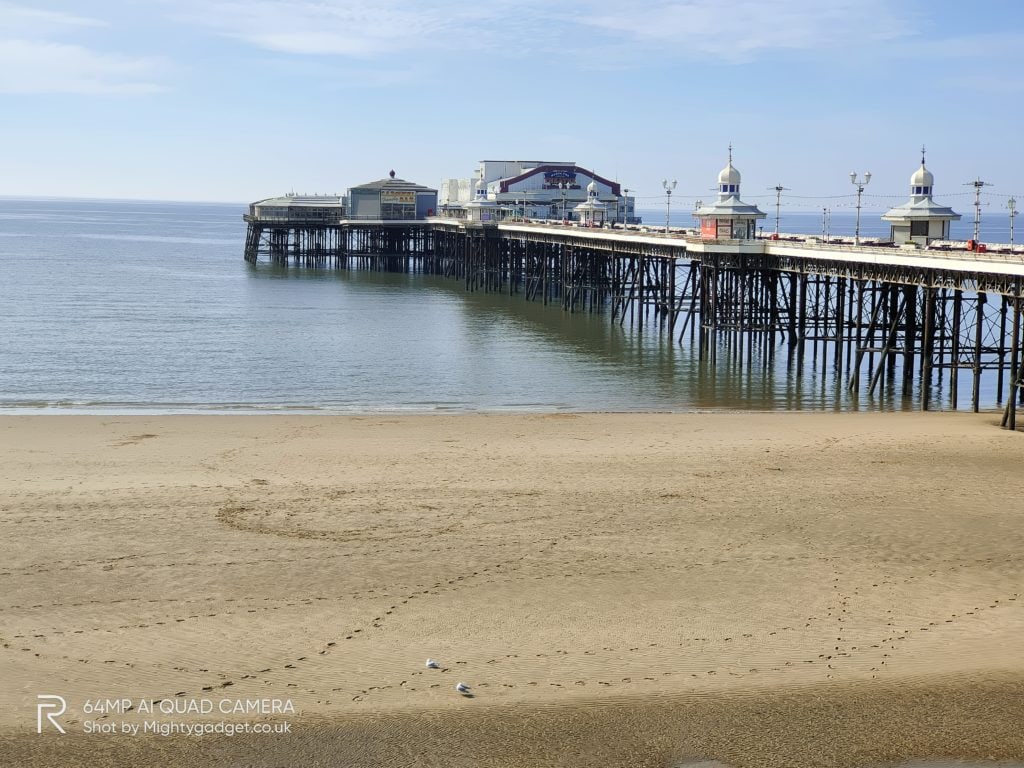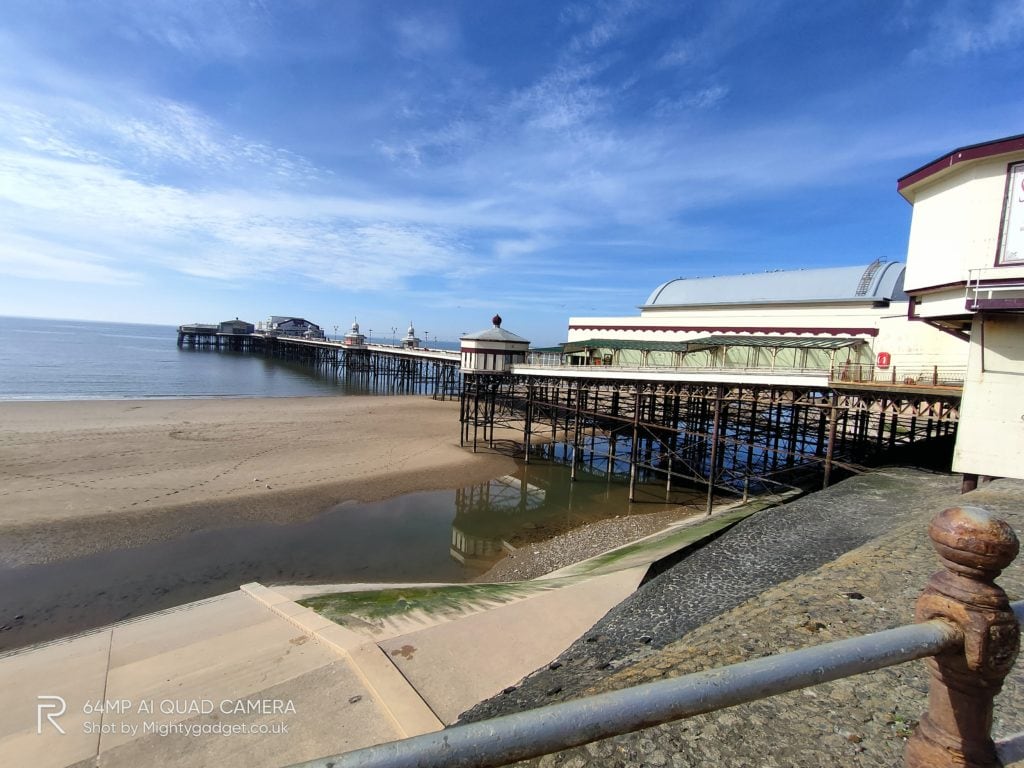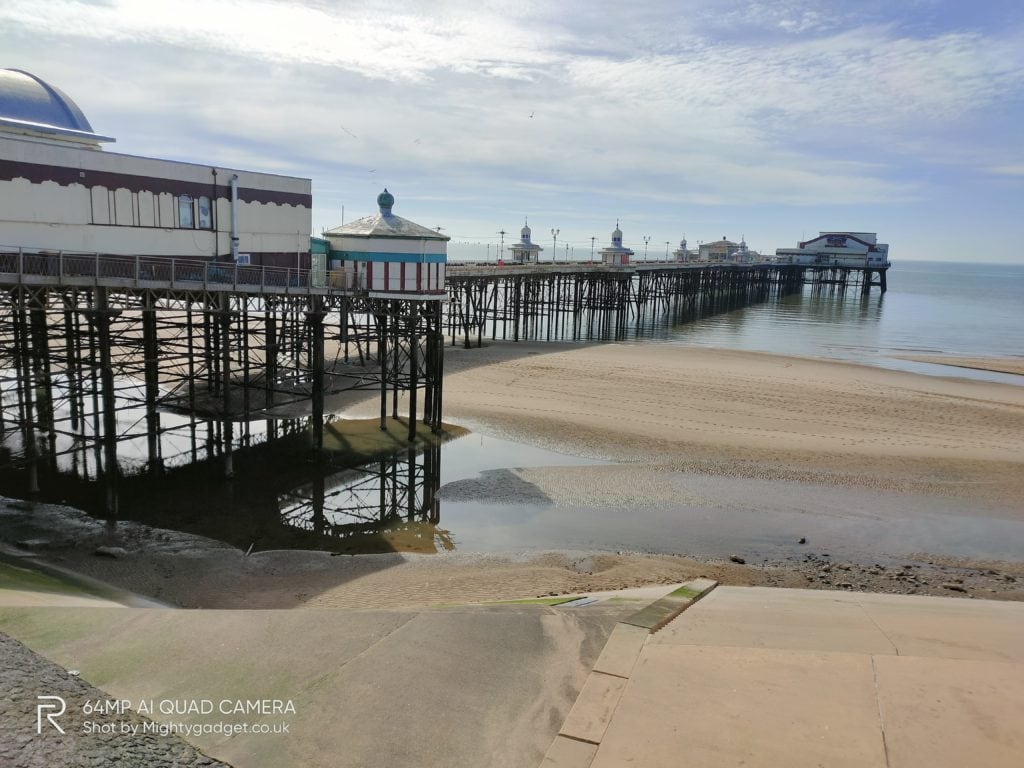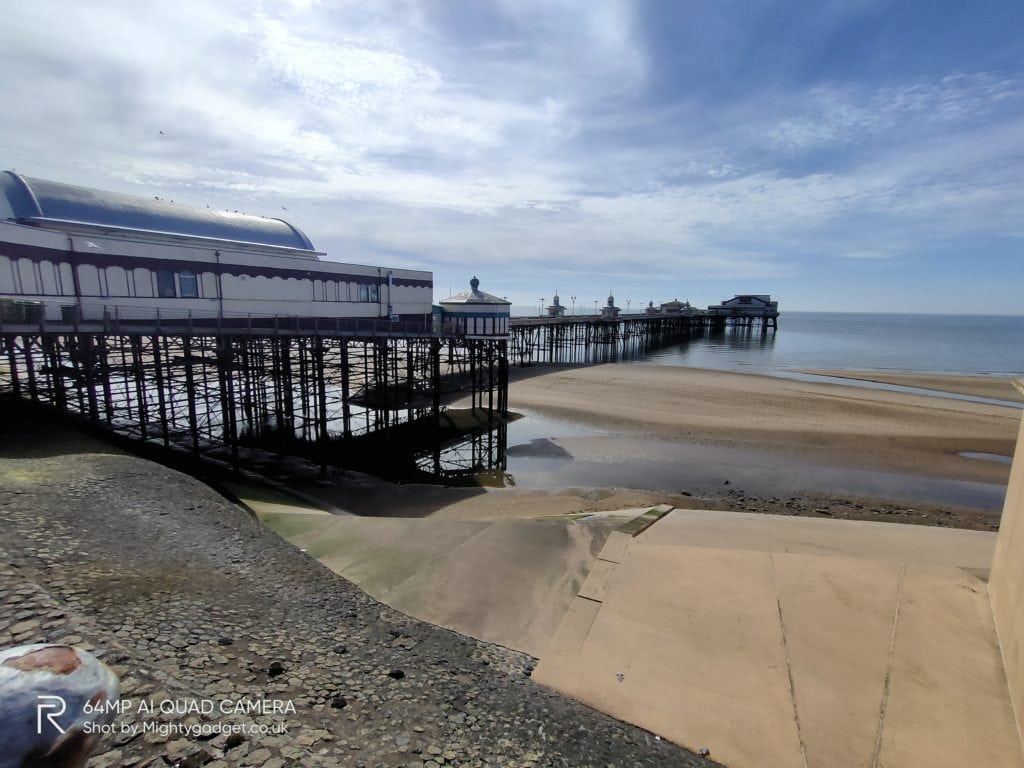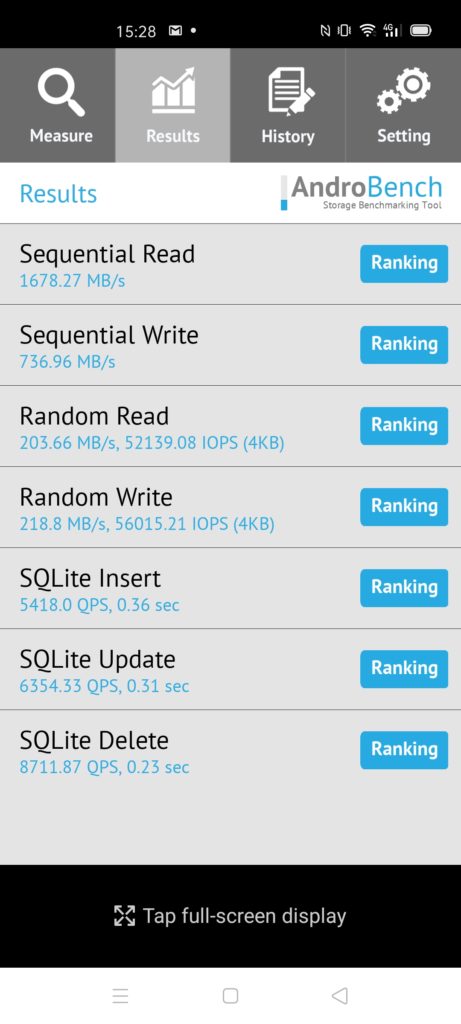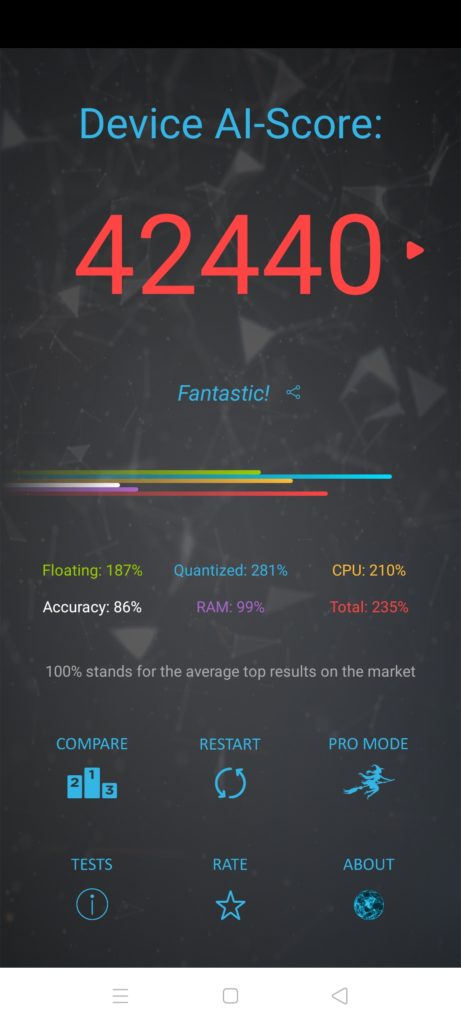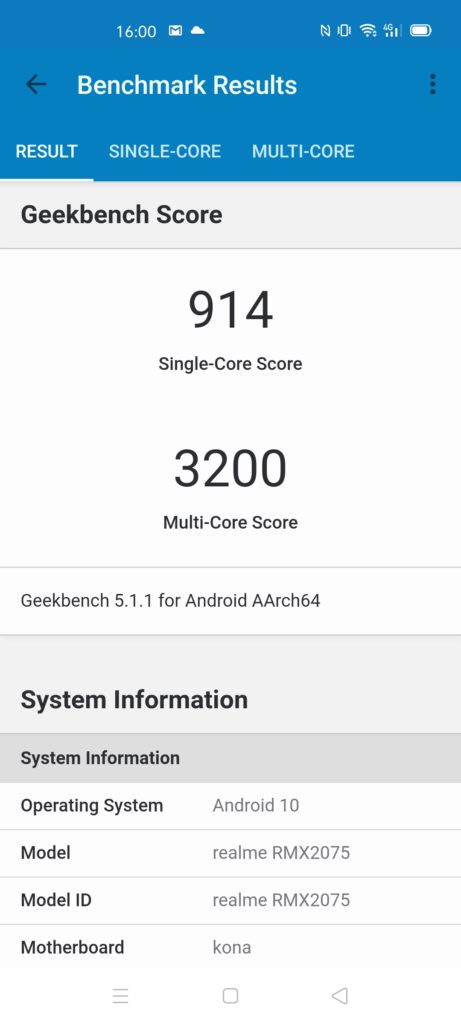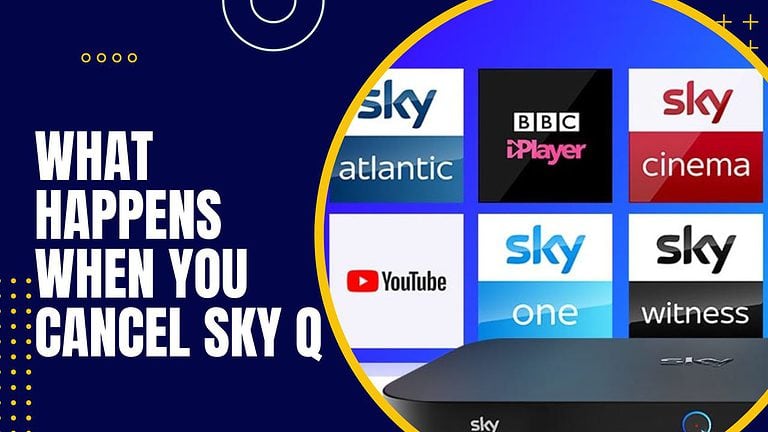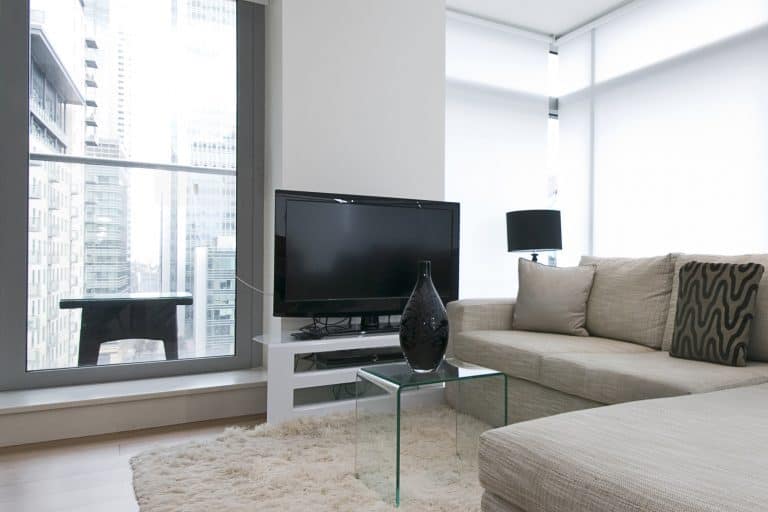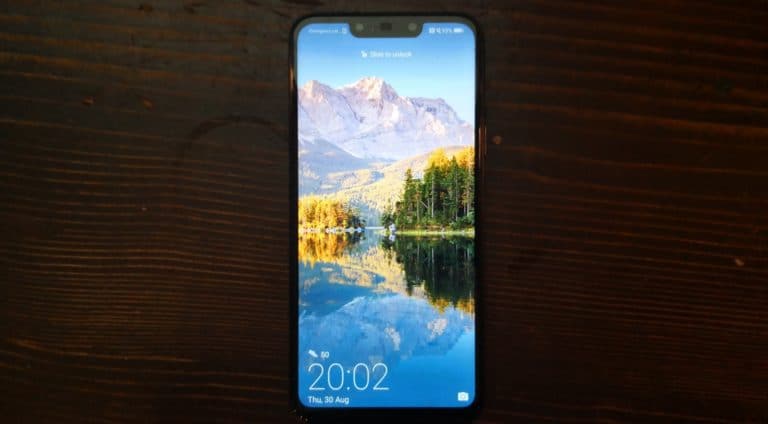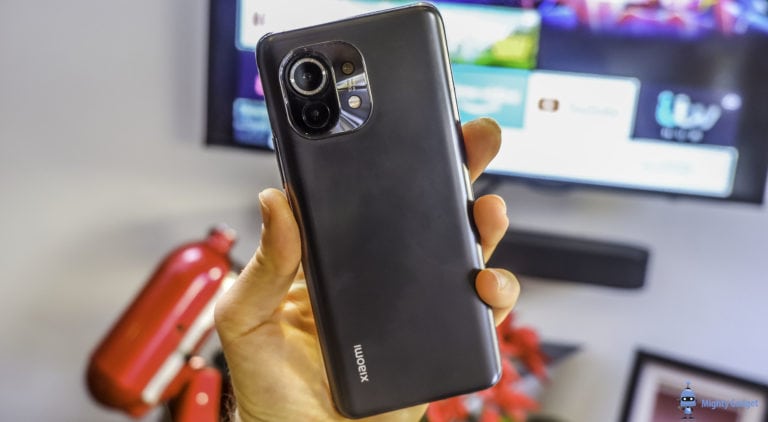Any links to online stores should be assumed to be affiliates. The company or PR agency provides all or most review samples. They have no control over my content, and I provide my honest opinion.
Announced back in February via live stream during the early stages of this pandemic, the Realme X50 Pro is set to launch in the EU imminently.
With a launch price of just 599-Euros/£521 it is by far the cheapest flagship phone launch so far this year in the EU and UK coming in almost £8
Realme have consistently impressed me offering exceptional value for money unrivalled by most brands.
With a launch price of just 599-Euros/£521, it is by far the cheapest flagship phone launch so far this year in the EU and UK. The recently launched OnePlus 8 is £80 more, and then nothing else available yet close to this price.
Specification
| Preview | Product | Rating | Price | |
|---|---|---|---|---|

| realme X50 Pro 5G- Moss Green, 5G Ready, NFC, 12GB+256GB,... | Buy on Amazon |
- Body: Gorilla Glass 5 front and back, aluminium frame
- Screen: 6.44-inch AMOLED, 20:9, 1080p+, HDR10+, 90Hz refresh rate
- Rear camera:
- Primary 64MP Samsung ISOCELL Bright GW1 Quad Bayer 1/1.72″ sensor, 0.8µm, f/1.8 lens
- 119° ultrawide-angle 8MP camera with f/2.3 lens
- 12MP telephoto camera with f/2.5 lens, PDAF, 2x optical and 5x hybrid zoom
- 2MP depth sensor
- Front camera:
- Primary 32MP Quad Bayer 1/2.8″ sensor, 0.8µm, f/2.5 lens
- 105° ultrawide-angle 8MP camera with f/2.2 lens
- Chipset: Snapdragon 865 5G: octa-core CPU (1×2.84 GHz Kryo 585 Gold & 3×2.42 GHz Kryo 585 Gold & 4×1.8 GHz Kryo 585 Silver), Adreno 650 GPU
- Memory: 8/12GB LPDDR5 RAM, 128/256GB UFS 3.0 storage.
- OS: Android 10.0; Realme UI 1.0
- Battery: 4,200mAh, 65W SuperDart charge (incl. in the box), 20W VOOC 3.0 support
- Connectivity: 5G, Dual SIM, Bluetooth 5.1, NFC, Wi-Fi a/b/g/n/ax/ax, dual GPS, USB-C
- Colours: Rust Red, Moss Green
- Misc: Under-display optical fingerprint reader, stereo speakers
- IP Rating – None
Realme X50 Pro vs X2 Pro
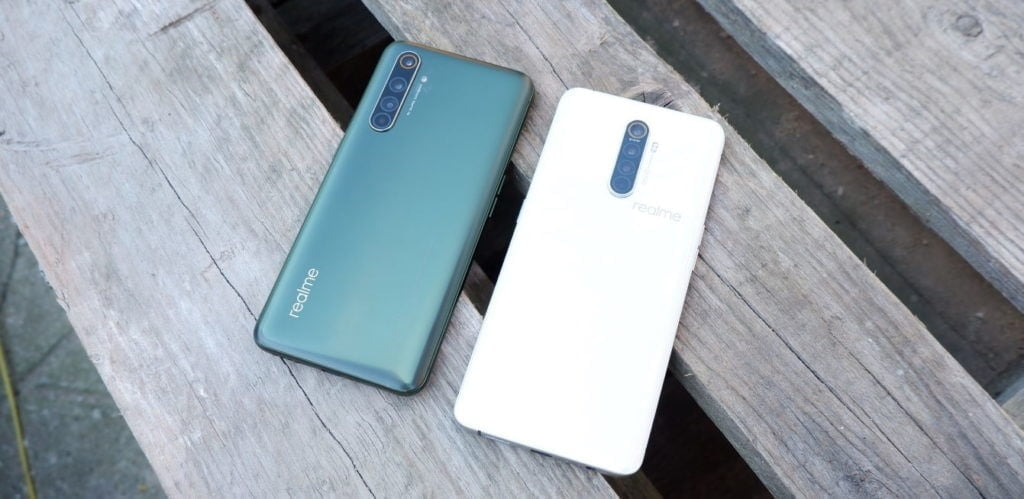
Apart from the fancy new 5G chipset, very little has changed between generations, so it doesn’t feel like a true successor to the superb Realme X2 Pro.
They are almost identical apart from:
- Fractionally smaller screen and overall dimensions.
- Upgraded to 5G Qualcomm Snapdragon 865
- Switch to a dual punch-hole design which houses an improved 32MP & 8MP lenses.
- 5% larger battery size with 4200mAH
- Improved the charge speed from 50W to 65W
- Switched from Color OS to Realme UI (they are very similar)
- Minor differences to the secondary cameras
| Preview | Product | Rating | Price | |
|---|---|---|---|---|

| realme X2 Pro (Neptune Blue, 8+128GB, UK Plug) | Buy on Amazon |
Design and Display
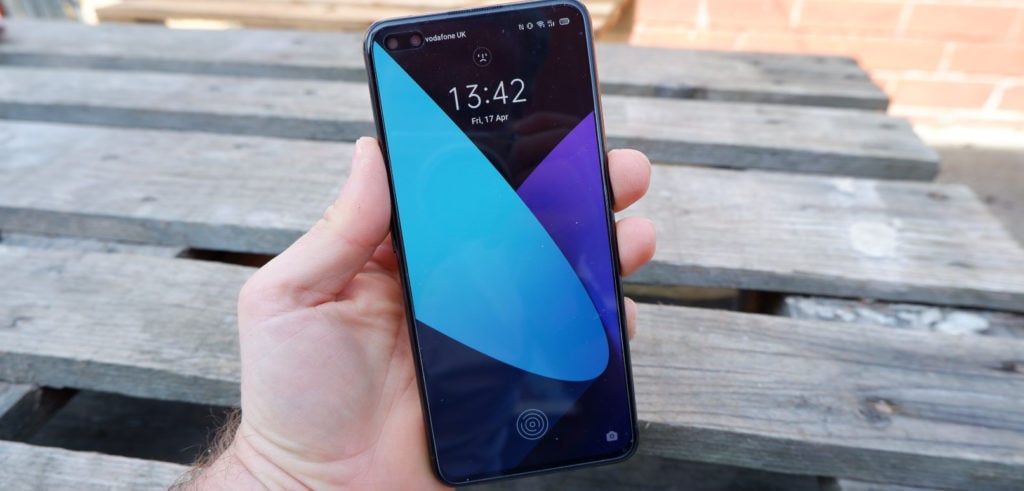

There are a few changes to the overall design since the X2 Pro, the most significant that you will notice is the new pill-shaped cut out for the twin selfie cameras, this cuts down the notification area a little, but is less ugly than a notch.
The screen size has dropped by 0.06-inches which is not much, but it knocks 2mm off the hight and 1.5mm off the width, and it does feel quite small compared to other phones. A lot of phones launched recently are over 6.5-inches, so if you prefer something a little smaller, then could be an ideal option for you.
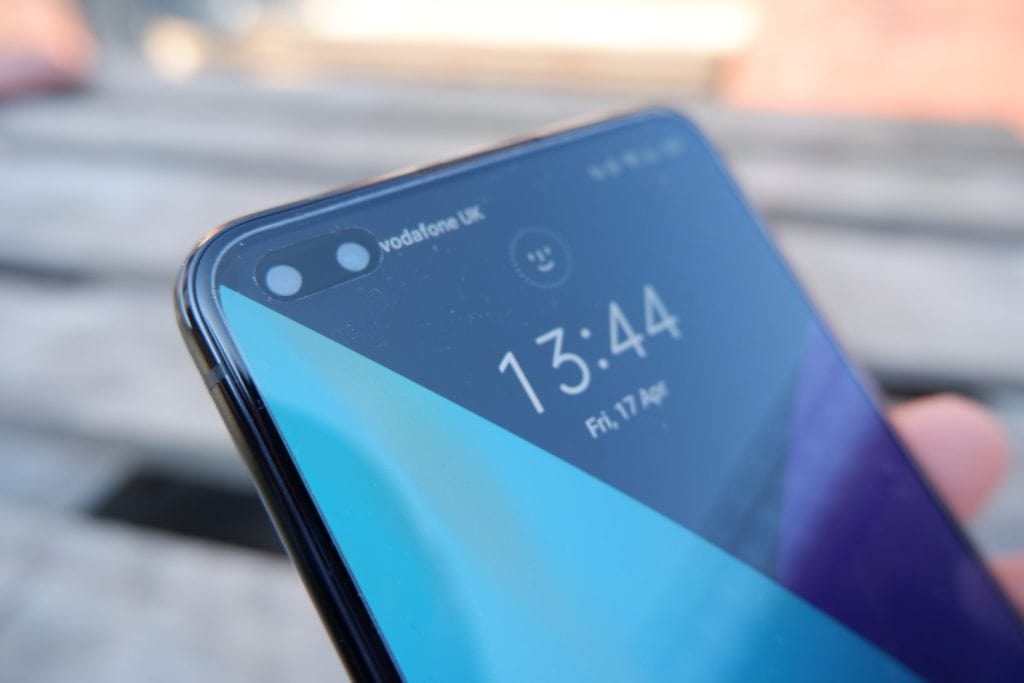

A lot of (more expensive) phones have adopted curved edge to edge displays, so this does look a little dated with its flat screen and slight bezels. The similarly priced, but not launched in the EU, Xiaomi Redmi K30 Pro also has a flat display with bezels, and this is to be expected at this price.
For colours, Realme have no used a sort of metallic powdered matt effect design which is much less shiny or reflective than the X2 Pro or other recent models. I was sent moss green, and it looks smart.
The display itself retains the 90Hz refresh rate of the X2 Pro, competing brands are pushing this to 120Hz, but I find that 90hz is more than enough and a good balance of performance and price. If you have not experienced a high refresh rate display before you will be impressed by how smooth and responsive everything will be.
The panel also supports HDR10+ and thanks Widevine L1 DRM support, you will be able to enjoy high-res HDR content from Netflix and the likes. It is also tuned to comply with the DCI-P3 (Vivid) and sRGB (Natural) colour spaces giving you accurate colour reproduction.
Screen brightness is good too, it actually goes a bit brighter than the Huawei P40 Pro that I reviewed recently, giving you a bit more visibility when outdoors.
Fingerprint Scanner and Facial Recognition
Unlock options work very well, in-display fingerprint scanning has improved a lot since it was first introduced to phones. It is accurate and ultra-fast at its unlock speeds.
I rarely need to use my finger with the face unlock as this often unlocks the phone before I have a chance to use my finger.
Camera
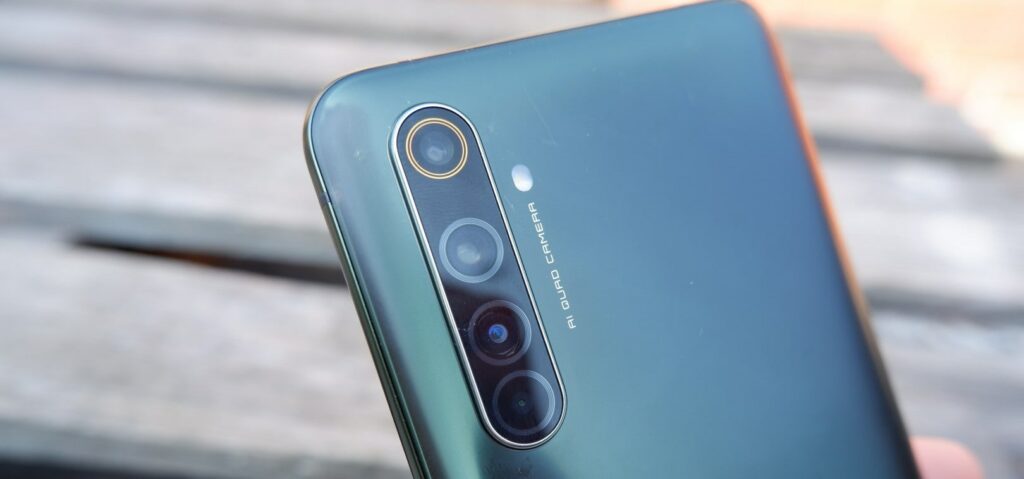

With the camera specification being almost identical to the X2 Pro, there is not a huge difference in camera performance with the two phones. In particular, the main sensor remains the same, which is a 64MP Samsung GW1.
There are minor differences with the other three lenses with a slight difference with the telephoto lens, and the ultra-wide have a slighter wider field of view.
The front lenses have seen the biggest upgrade switching to a 32MP Sony IMX 616 wide lens with an 8MP ultra-wide.
For the rear cameras, the overall performance, as expected, is similar to the X2 Pro. There is more different than I was expecting though, it looks like Realme has worked on the software processing a bit, and certain aspects have improved.
In particular, the night mode and general low light performance appear to have improved noticeably. The night mode still suffers when there is any motion involved and the overall low light performance isn’t going to win any awards, but considering the price point, it is surprisingly good.
Low Light
In conditions with more light the camera performs much better, with it producing consistently good results most of the time. I was particularly impressed with the natural-looking bokeh effect you can get.


In one shot, of a horse, using the zoom lens, details of the horse looks poor and dark, indicating poor dynamic range due to the sun shining on the other side of it. I didn’t have another phone on me at the time, so no way of comparing how other phones would have handled the difficult conditions of the shot.
Zoom and dynamic range
The zoom lens is not its strongest feature with a noticeable loss of detail at 5x zoom. At 2x it performs well, and with no other phones with a zoom lens at this price it is hard to criticise too much.
Macro
Video has the option for ultra steady and a max ultra steady when recording at 1080P, this works surprisingly well, but as you would expect, it is not a miracle worker. While walking the footage is nice and stable, and it does help a lot even when accelerating into a run.


Video
The camera can use the 8MP ultra-wide and 2MP depth sensor to achieve some impressive up close macro shots. It is not something I use a lot, but it is a nice option to have, and for anyone that does product shots it can be very useful. The camera app does behave strangely when, in this mode, there is a noticeable switch between lenses when it does this. It is not a major issue, though.
I rarely record video myself, but the camera supports video up to 4K/30fps video recording, or when recording at 1080p it can go up to 60FPS.
Camera Samples
Performance and Benchmarks
I have done a more detailed analysis on how the Qualcomm Snapdragon 865 performs in comparison to the SD855+ and the Kirin 990 5G
%27%20fill-opacity%3D%27.5%27%3E%3Cellipse%20fill%3D%22%230010c5%22%20fill-opacity%3D%22.5%22%20rx%3D%221%22%20ry%3D%221%22%20transform%3D%22matrix(455.96766%20-5.4307%202.14274%20179.90712%20221.3%20135.4)%22%2F%3E%3Cellipse%20fill%3D%22%23fff%22%20fill-opacity%3D%22.5%22%20rx%3D%221%22%20ry%3D%221%22%20transform%3D%22matrix(447.1586%20-89.35986%2075.23558%20376.48038%20264.2%20724)%22%2F%3E%3Cellipse%20fill%3D%22%23fff%22%20fill-opacity%3D%22.5%22%20rx%3D%221%22%20ry%3D%221%22%20transform%3D%22matrix(254.5116%20133.9365%20-212.3593%20403.5338%20307.6%20796.8)%22%2F%3E%3Cellipse%20fill%3D%22%231460d4%22%20fill-opacity%3D%22.5%22%20rx%3D%221%22%20ry%3D%221%22%20transform%3D%22matrix(.00319%20138.23352%20-456%20.01052%20240.2%20125.4)%22%2F%3E%3C%2Fg%3E%3C%2Fsvg%3E)

Smart Mode %27%20fill-opacity%3D%27.5%27%3E%3Cellipse%20fill%3D%22%230012c6%22%20fill-opacity%3D%22.5%22%20rx%3D%221%22%20ry%3D%221%22%20transform%3D%22matrix(8.5024%20-187.23745%20455.53058%2020.68552%20169%20131.7)%22%2F%3E%3Cellipse%20fill%3D%22%23fff%22%20fill-opacity%3D%22.5%22%20rx%3D%221%22%20ry%3D%221%22%20transform%3D%22matrix(81.42085%20376.58635%20-445.70165%2096.3641%20259.1%20725)%22%2F%3E%3Cellipse%20fill%3D%22%23fff%22%20fill-opacity%3D%22.5%22%20rx%3D%221%22%20ry%3D%221%22%20transform%3D%22matrix(-237.16068%20-132.00194%20221.76893%20-398.44013%20302.1%20767.8)%22%2F%3E%3Cellipse%20fill%3D%22%23145fd3%22%20fill-opacity%3D%22.5%22%20rx%3D%221%22%20ry%3D%221%22%20transform%3D%22matrix(-.26805%20-139.3486%20455.99916%20-.87717%20236.7%20123.8)%22%2F%3E%3C%2Fg%3E%3C%2Fsvg%3E)
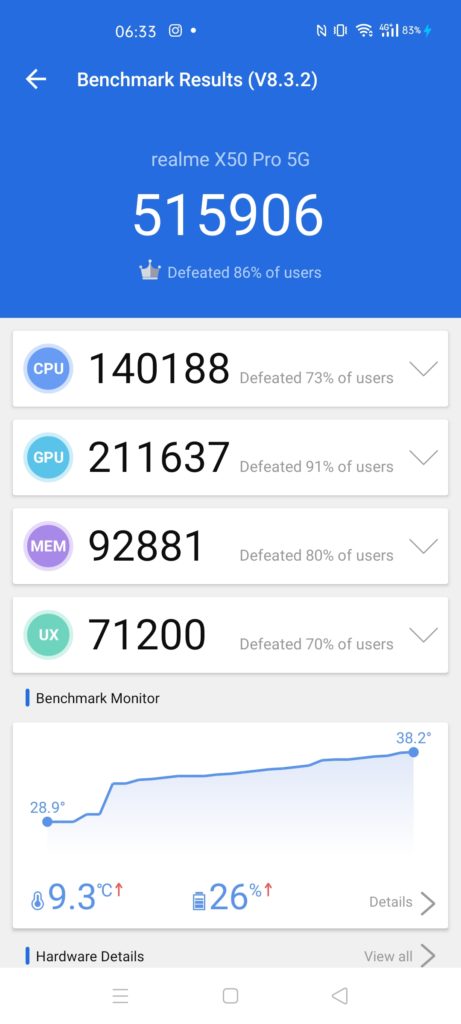
No performance improvements %27%20fill-opacity%3D%27.5%27%3E%3Cellipse%20fill%3D%22%23373737%22%20fill-opacity%3D%22.5%22%20rx%3D%221%22%20ry%3D%221%22%20transform%3D%22matrix(85.28315%2017.97198%20-28.37638%20134.6556%20131%20226.4)%22%2F%3E%3Cellipse%20fill-opacity%3D%22.5%22%20rx%3D%221%22%20ry%3D%221%22%20transform%3D%22matrix(83.55866%20-289.27955%20390.7648%20112.87277%20208.4%20658.7)%22%2F%3E%3Cpath%20fill%3D%22%23232323%22%20fill-opacity%3D%22.5%22%20d%3D%22M82%2098h128v248H82z%22%2F%3E%3Cpath%20fill-opacity%3D%22.5%22%20d%3D%22M66%20190L22%20394-10-18z%22%2F%3E%3C%2Fg%3E%3C%2Fsvg%3E)

With the Snapdragon 865 inside this, performance is flawless as you would expect, I never have any performance issues with the older SD855+, and this is even faster.
The chipset can comfortably drive the 90Hz screen with no issues, and this will handle all the games you through at it.
Things got a little confusing with the synthetic benchmarks. The phone has three power modes, performance, smart and no performance enhancements. Under the default smart mode, the phone score higher than I would have expected but not excessively so. In specific benchmarks such as PC Mark, it appears to fix the CPU frequencies whereas the much lower scoring Huawei P40 Pro dynamically adjusts them to conserve power.
%22%20transform%3D%22matrix(4%200%200%204%202%202)%22%20fill-opacity%3D%22.5%22%3E%3Cellipse%20rx%3D%221%22%20ry%3D%221%22%20transform%3D%22matrix(2.1316%2020.53455%20-113.39071%2011.7706%2058.3%200)%22%2F%3E%3Cellipse%20fill%3D%22%2398a3ad%22%20rx%3D%221%22%20ry%3D%221%22%20transform%3D%22matrix(100.3269%20-8.87888%202.54893%2028.80167%2045.8%2039.8)%22%2F%3E%3Cellipse%20fill%3D%22%23fff%22%20rx%3D%221%22%20ry%3D%221%22%20transform%3D%22matrix(-113.99983%20.19897%20-.1689%20-96.77608%2061.8%20174.7)%22%2F%3E%3Cellipse%20fill%3D%22%23191817%22%20cx%3D%2237%22%20rx%3D%2299%22%20ry%3D%228%22%2F%3E%3C%2Fg%3E%3C%2Fsvg%3E)
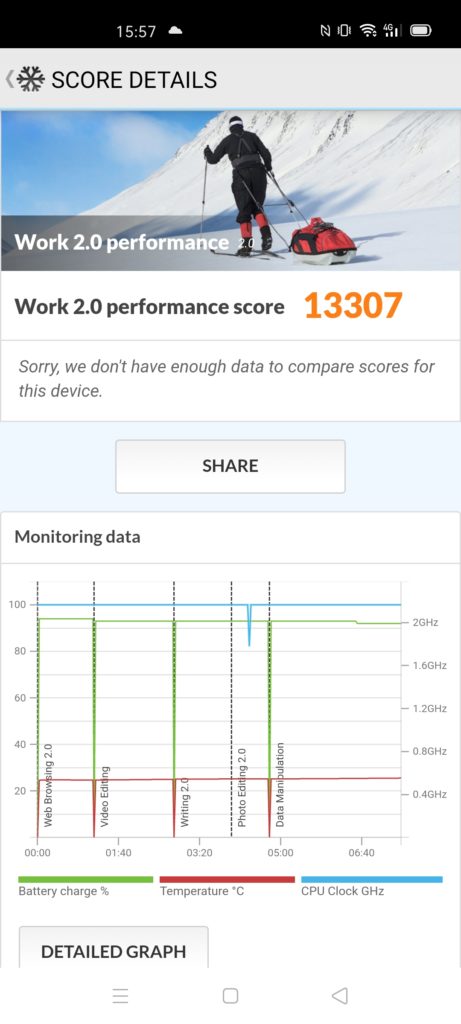
%22%20transform%3D%22matrix(4%200%200%204%202%202)%22%20fill-opacity%3D%22.5%22%3E%3Cellipse%20cx%3D%2223%22%20rx%3D%22108%22%20ry%3D%2221%22%2F%3E%3Cellipse%20fill%3D%22%238596a5%22%20rx%3D%221%22%20ry%3D%221%22%20transform%3D%22rotate(-173.1%2016.6%2019.6)%20scale(57.66057%2029.27103)%22%2F%3E%3Cellipse%20fill%3D%22%23fff%22%20rx%3D%221%22%20ry%3D%221%22%20transform%3D%22rotate(-102.5%20100.6%2065)%20scale(102.3092%20113.99999)%22%2F%3E%3Cellipse%20fill%3D%22%231a1a19%22%20cx%3D%2230%22%20rx%3D%22108%22%20ry%3D%228%22%2F%3E%3C%2Fg%3E%3C%2Fsvg%3E)
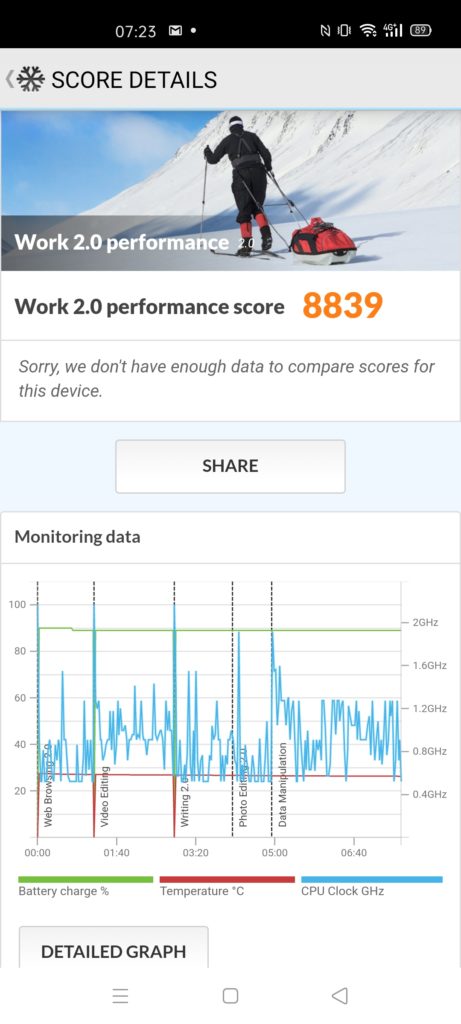
No performance improvements
What should happen is that in gaming, the clocks get boosted, but day to day tasks not so much. However, each company optimises their phones differently, and that’s why you can see significant variances in battery life.
Either way, this phone is one of the most powerful options on the market, and you should have no concerns about its performance.
Battery
%22%20transform%3D%22matrix(4%200%200%204%202%202)%22%20fill-opacity%3D%22.5%22%3E%3Cellipse%20fill%3D%22%23000006%22%20rx%3D%221%22%20ry%3D%221%22%20transform%3D%22matrix(1.01328%2012.92573%20-113.65132%208.90939%2052.6%206.7)%22%2F%3E%3Cellipse%20fill%3D%22%23fffff3%22%20cx%3D%2269%22%20cy%3D%22179%22%20rx%3D%22110%22%20ry%3D%22110%22%2F%3E%3Cpath%20fill%3D%22%23fcae5f%22%20d%3D%22M89.5%20208h-81v-54h81z%22%2F%3E%3Cellipse%20fill%3D%22%23869cb2%22%20rx%3D%221%22%20ry%3D%221%22%20transform%3D%22matrix(54.95145%20-3.45725%201.84604%2029.3419%2031%2038.8)%22%2F%3E%3C%2Fg%3E%3C%2Fsvg%3E)
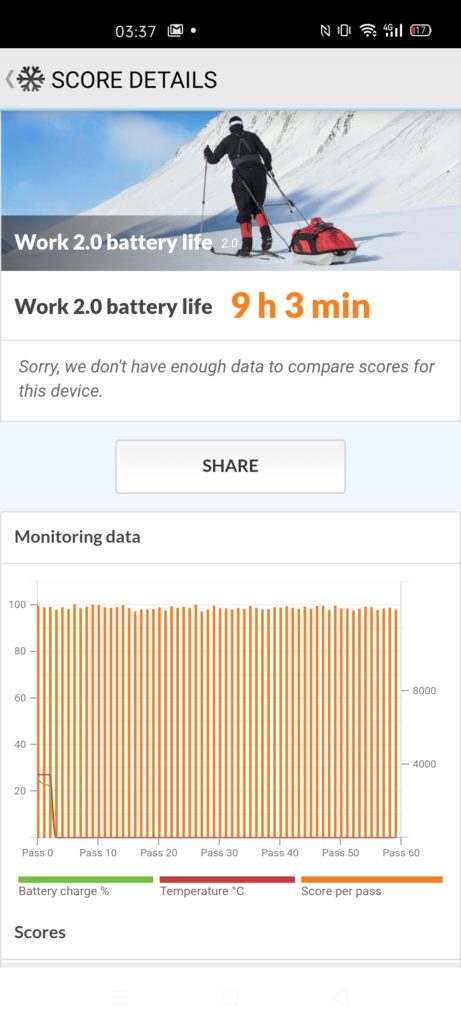
%22%20transform%3D%22matrix(4%200%200%204%202%202)%22%20fill-opacity%3D%22.5%22%3E%3Cellipse%20fill%3D%22%233955af%22%20rx%3D%221%22%20ry%3D%221%22%20transform%3D%22matrix(.30765%2017.62546%20-25.37747%20.44297%2055.8%2080)%22%2F%3E%3Cellipse%20fill%3D%22%232a3043%22%20rx%3D%221%22%20ry%3D%221%22%20transform%3D%22matrix(-6.91873%2035.43158%20-28.46543%20-5.55845%2057%2069.3)%22%2F%3E%3Cellipse%20fill%3D%22%23115f9f%22%20cx%3D%2256%22%20cy%3D%2278%22%20rx%3D%2216%22%20ry%3D%2212%22%2F%3E%3Cellipse%20cx%3D%2247%22%20cy%3D%22207%22%20rx%3D%22104%22%20ry%3D%22104%22%2F%3E%3C%2Fg%3E%3C%2Fsvg%3E)
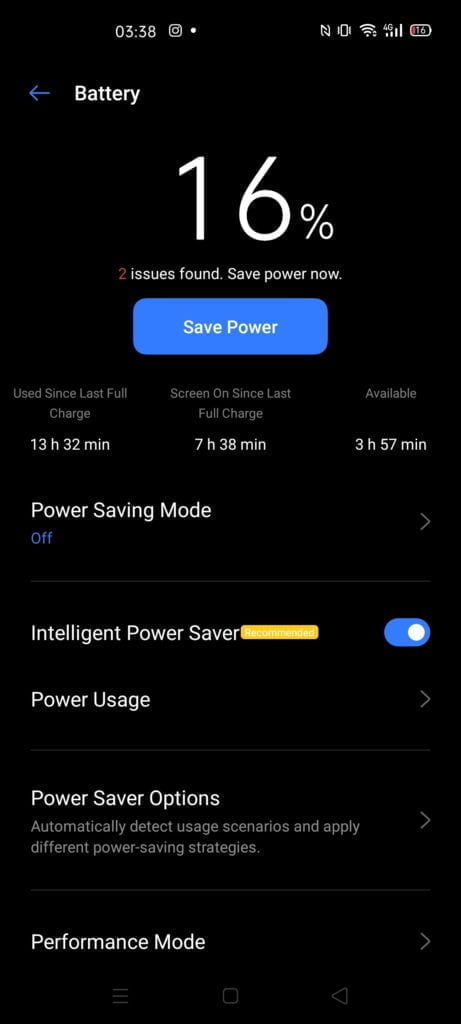
%27%20fill-opacity%3D%27.5%27%3E%3Cellipse%20fill%3D%22%23000006%22%20fill-opacity%3D%22.5%22%20rx%3D%221%22%20ry%3D%221%22%20transform%3D%22matrix(5.09446%2072.04624%20-454.86425%2032.16388%20246.8%202)%22%2F%3E%3Cellipse%20fill%3D%22%23ff9f4e%22%20fill-opacity%3D%22.5%22%20rx%3D%221%22%20ry%3D%221%22%20transform%3D%22matrix(-.21837%20125.11628%20-207.00894%20-.3613%20202.1%20725.8)%22%2F%3E%3Cellipse%20fill%3D%22%23fff%22%20fill-opacity%3D%22.5%22%20rx%3D%221%22%20ry%3D%221%22%20transform%3D%22rotate(88.1%20-80.8%20372.3)%20scale(155.3098%20456)%22%2F%3E%3Cellipse%20fill%3D%22%23fff%22%20fill-opacity%3D%22.5%22%20rx%3D%221%22%20ry%3D%221%22%20transform%3D%22rotate(88.6%20-308%20656.2)%20scale(115.04764%20456.00002)%22%2F%3E%3C%2Fg%3E%3C%2Fsvg%3E)
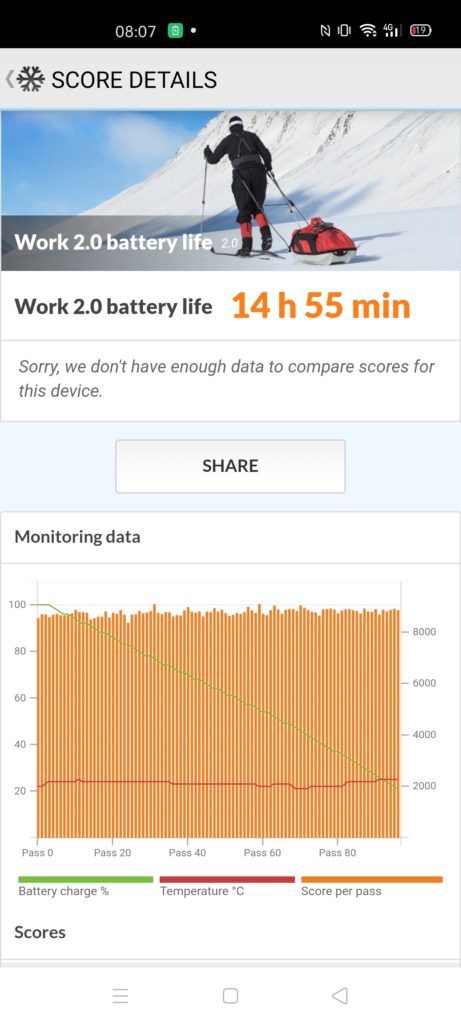
No performance improvements %22%20transform%3D%22matrix(4%200%200%204%202%202)%22%20fill-opacity%3D%22.5%22%3E%3Cellipse%20fill%3D%22%233753ae%22%20rx%3D%221%22%20ry%3D%221%22%20transform%3D%22matrix(.49103%2017.57932%20-24.93282%20.69644%2055.4%2079)%22%2F%3E%3Cellipse%20fill%3D%22%232c3349%22%20rx%3D%221%22%20ry%3D%221%22%20transform%3D%22matrix(23.7246%209.39687%20-13.28405%2033.53871%2056.8%2070.2)%22%2F%3E%3Cellipse%20fill%3D%22%230a609b%22%20cx%3D%2255%22%20cy%3D%2279%22%20rx%3D%2216%22%20ry%3D%2211%22%2F%3E%3Cellipse%20cx%3D%2268%22%20cy%3D%22204%22%20rx%3D%22114%22%20ry%3D%22102%22%2F%3E%3C%2Fg%3E%3C%2Fsvg%3E)
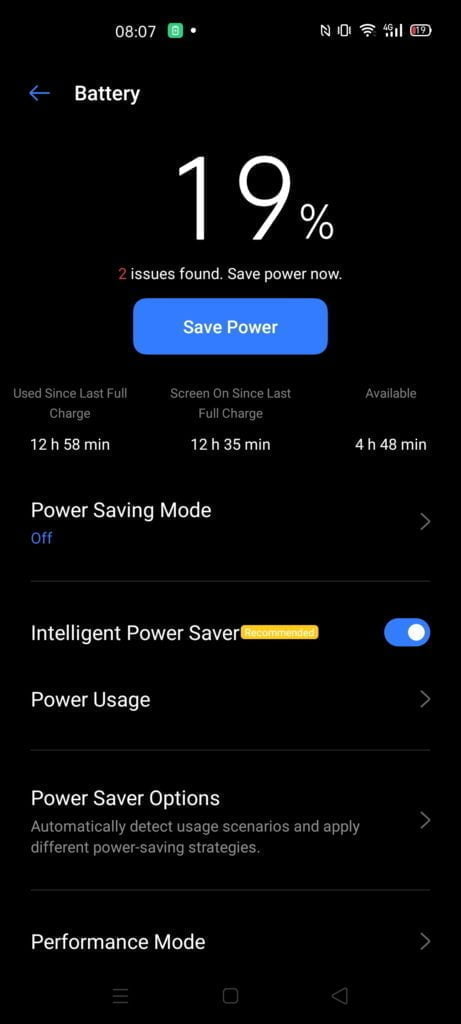
No performance improvements
With the phone being a little aggressive with the clocks during benchmarks, the is clearly a knock-on effect on simulated battery tests. It still performed well, bot quite the same standard as I saw on the P40 Pro.
In real-world usage, the phone can easily get to the end of the day with heavy usage, and if you are caught short the 65W charger will fully charge the phone in about 35 mins, it is ridiculously fast.
The 65W charger deserves extra praise, while it is rare that I need to charge my phone midday, there are plenty of times (in the past) when I have been on holiday or press trips taking photos all day. Being able to charge your phone almost fully in 30 mins while you have a quick bit of downtime is absolutely fantastic.
While the default power plan produced so-so battery performance in testing, switching to the no performance improvements allowed the PCMark battery test to shoot up to 14h 55mins with a 12h 35-minute screen on time. So if you are in a situation where you need the battery to last as long as possible, dialling down the performance mode to its lowest setting should easily net you a couple of days worth of use.
Software
The Realme X50 Pro runs on Android 10, but it is now switched to the Realme UI compared to ColorOS from previous generations. There are a lot of similarities, at first I didn’t notice anything different, but it was only when using the X2 Pro, and X50 pro side by side for a while did I start to see the various tweaks here and there.
Realme have made the OS a little closer to stock you also get popular options such as dark mode and an always-on display giving notifications and the time when the display is off.
There is little to no bloatware, unlike some of the cheaper options and there is no advertising built in. Gallery, Music, and Videos are all from Realme. A few apps are pre-installed such as Netflix and Opera, nothing annoying, and they can all be uninstalled.
Price and Competition
With a launch price of 599-Euros, there is no competing product at the same price. This is the main selling point of the phone, and it could very well be the cheapest flagship phone of the year.
The recently launched OnePlus 8 is the closest competitor costing around £80 more, which is a 13% difference. It is a nicer design with arguably better software, but the hardware spec of the camera is not as good.
| Preview | Product | Rating | Price | |
|---|---|---|---|---|
  | OnePlus 8 5G 8GB RAM 128GB SIM-Free Smartphone with Triple... | Buy on Amazon |
The Xiaomi Redmi K30 Pro is the obvious competitor, but it has not been launched in the EU or UK yet so not a proper alternative yet. YOu can pick it up on a grey import for around £500 though, and you can do the same with the Realme for around £400.
The Black Shark 3 is also due to launch soon, it should be affordable, but pricing needs to be confirmed.
Beyond that, if you want a 5G flagship phone, you are looking at spending £799 or higher for most of the other options.
The best alternatives, if you don’t need 5G, is just to go for the X2 Pro, which is much cheaper, or the OnePlus 7T for around the same price as this. The X2 Pro is on Amazon UK but you will get it cheaper if you buy from Amazon Spain for 399-Euros.
| Preview | Product | Rating | Price | |
|---|---|---|---|---|
   | realme X2 Pro (Neptune Blue, 8+128GB, UK Plug) | Buy on Amazon |
| Preview | Product | Rating | Price | |
|---|---|---|---|---|
|
| OnePlus 7T 8 GB RAM 128 GB SIM-Free Smartphone - Glacier... | Buy on Amazon |
Overall
Realme are onto yet another winner here. It is the cheapest phone with the Snapdragon 865 available in the UK and EU by a considerable margin, and it is likely to stay like that for some time quite possibly being the most affordable option of the year.
So if you want an affordable 5G flagship phone, then this absolutely should be at the top of your list for consideration. From a hardware specification point of view, it is better than the recently announced OnePlus 8 with a more versatile camera arrangement, faster RAM and faster charging.
Its flat display with slightly chunky bezels is less impressive than some of the other flagships, but that is a sacrifice you make for affordability.
The top of the range 5G Qualcomm Snapdragon 865 does come at a cost though, while this may be the most affordable option of the year, it is still a big jump from the launch price of the Realme X2 Pro.
Apart from the new more powerful chipset which introduces 5G and Wi-Fi 6, there is very little differentiating the two phones. A better front camera, 5% increase in battery size and a faster 65W charge. Current pricing for the Realme X2 Pro is 399-Euros for the 8GB/128GB model vs 599-Euros.
This does not make the X50 Pro a bad phone. Realme does not appear to blame for this price rise; this price hike is reflected across all the brands so far with several of the premium flagships going well over the £1k mark. Apparently, the reason for the price hikes is that device manufacturers will have to pay for a separate modem, and they have to use the 5G X55 modem, and this is likely a reason why some brands are opting to go with the more affordable Snapdragon 765G this year.
If 5G is not important to you at all, I would seriously consider getting the superb Realme X2 Pro instead saving you 200-Euros/£174.
If 5G is essential, but you still want an affordable flagship, then this is the best choice you have. It is a superb phone and unlikely to receive much competition at this price for the rest of the year.
Realme X50 Pro Review Rating
Summary
Undoubtedly a superb phone offering incredible value for money compared to most other brands, but I feel it is slightly overshadowed by the incredibly low priced and similarly specced Realme X2 Pro
Overall
90%-
Overall - 90%90%
I am James, a UK-based tech enthusiast and the Editor and Owner of Mighty Gadget, which I’ve proudly run since 2007. Passionate about all things technology, my expertise spans from computers and networking to mobile, wearables, and smart home devices.
As a fitness fanatic who loves running and cycling, I also have a keen interest in fitness-related technology, and I take every opportunity to cover this niche on my blog. My diverse interests allow me to bring a unique perspective to tech blogging, merging lifestyle, fitness, and the latest tech trends.
In my academic pursuits, I earned a BSc in Information Systems Design from UCLAN, before advancing my learning with a Master’s Degree in Computing. This advanced study also included Cisco CCNA accreditation, further demonstrating my commitment to understanding and staying ahead of the technology curve.
I’m proud to share that Vuelio has consistently ranked Mighty Gadget as one of the top technology blogs in the UK. With my dedication to technology and drive to share my insights, I aim to continue providing my readers with engaging and informative content.
Last update on 2024-04-25 / Affiliate links / Images from Amazon Product Advertising API

